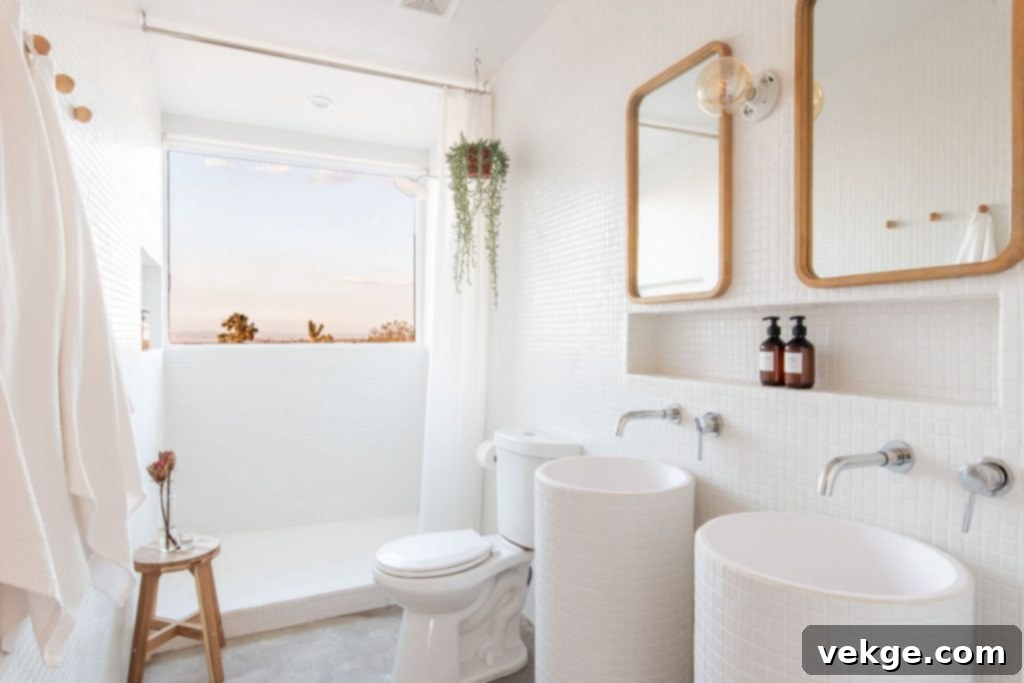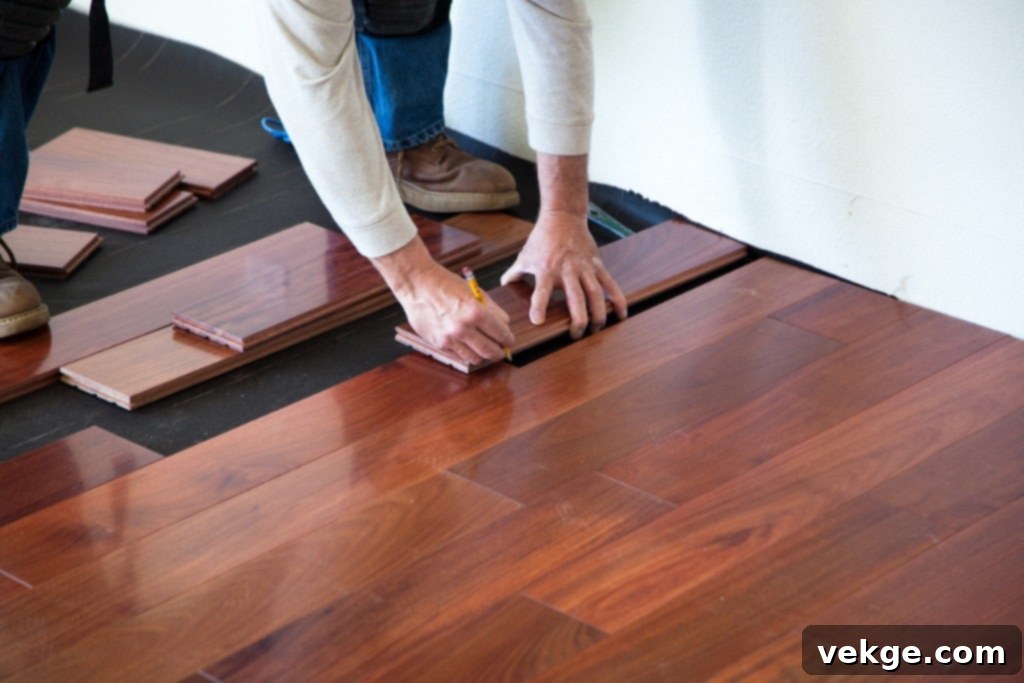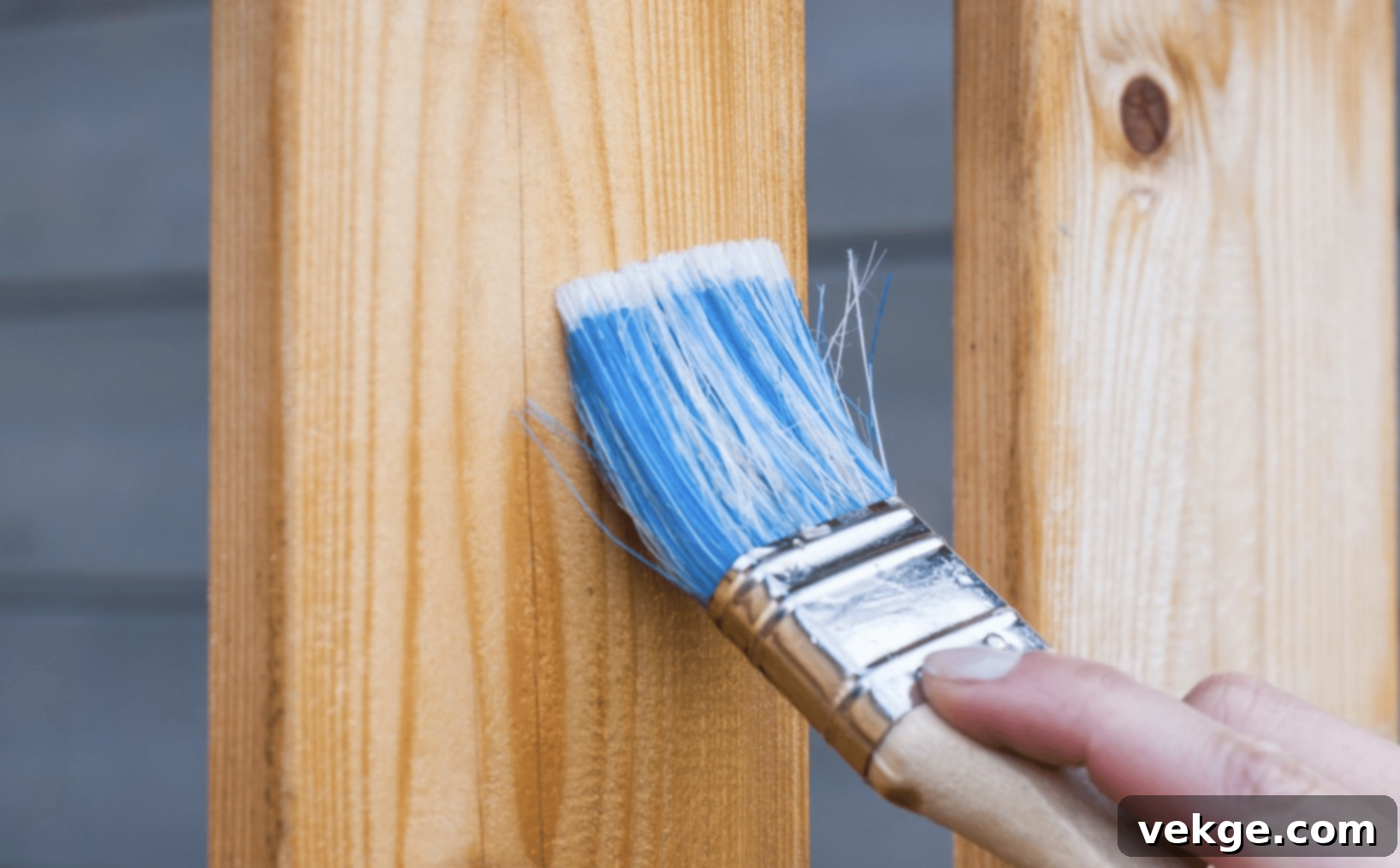Boost Your Rental Property Value: Top DIY Projects for Savvy Landlords
For any landlord, the goal is often twofold: to make a property highly appealing to prospective tenants and to maximize its rental income and overall market value. Whether you’re looking to attract your ideal tenant, ensure quick occupancy, or position your investment for a profitable sale down the line, adding value to your buy-to-let homes is a strategy few would overlook. While extensive professional renovations can be a significant drain on your budget, there’s a wealth of DIY projects that can dramatically enhance your property’s appeal without breaking the bank. These smart, hands-on improvements allow you to invest sweat equity, transforming your rental units into highly desirable homes.
In this comprehensive guide, we’ll walk you through some of the most impactful and budget-friendly DIY projects specifically tailored for landlords. These projects are not only designed to improve aesthetics but also to boost functionality, durability, and energy efficiency, all of which contribute to a higher return on investment (ROI). We’ll explore practical tips and insights, demonstrating how a little creativity and effort can go a long way in distinguishing your rental property in a competitive market, ultimately helping you attract high-quality tenants and potentially sell your property portfolio with greater ease.
1. Fresh Coat of Paint: The Ultimate Property Refresher

Few DIY projects offer as much immediate impact and cost-effectiveness as a fresh coat of paint. It’s truly one of the easiest and least expensive ways to quickly revitalize your property, making it feel cleaner, brighter, and more modern. A well-executed paint job can instantly erase years of wear and tear, covering scuffs, marks, and fading, which significantly enhances a property’s perceived value and cleanliness. More than just aesthetics, a fresh coat of paint can protect walls from moisture and minor damage, extending the life of your interior surfaces.
When choosing colors for a rental property, neutral tones such as crisp white, warm beige, soft off-white, and light grey are your best allies. These colors are universally appealing, allowing prospective tenants to easily envision their own furniture and decor in the space. Furthermore, neutral palettes have a remarkable ability to make rooms appear larger and brighter, creating an inviting and airy atmosphere that is highly sought after. They offer a clean canvas, empowering tenants to personalize their living space without feeling restricted by bold or dated wall colors.
Tips for Success:
- Preparation is Key: Don’t underestimate the importance of proper surface preparation. Before dipping your brush, thoroughly clean all surfaces to remove dirt, grease, and grime. Patch any holes or cracks with spackle, sand down rough areas for a smooth finish, and tape off trim and ceilings precisely. Proper preparation ensures that the paint adheres well and results in a professional, long-lasting finish.
- Invest in Quality Paint: While it might seem counterintuitive to spend more on paint, high-quality paint offers better coverage, requires fewer coats, and provides a more durable and washable finish. This means less work for you in the long run and a more resilient surface that can withstand the demands of tenants, ultimately reducing maintenance costs between tenancies. Opt for paints with an eggshell or satin finish for walls, as they are easier to clean than matte finishes but less glossy than semi-gloss.
- Stick to a Neutral Palette: As mentioned, neutral colors appeal to the widest range of tenants, helping your property stand out in listings and during viewings. Avoid overly personal or trendy colors that might alienate potential renters. A consistent neutral theme throughout the property creates a cohesive and tranquil environment that most people find desirable.
- Consider Trim and Ceilings: Don’t forget the trim, doors, and ceilings. Crisp white trim can make neutral wall colors pop and add a polished look. Painting ceilings a clean white also contributes to the illusion of height and brightness.
2. Upgrading the Kitchen: The Heart of Tenant Attraction
Kitchens consistently rank as one of the most important rooms for prospective tenants, often serving as the make-or-break factor in their decision-making process. A well-maintained and slightly modernized kitchen can easily elicit an enthusiastic “Oh, yeah, we’ll totally take it!” while an outdated one might prompt a hesitant “Let me see what else is out there.” The good news is that you don’t need a full-scale remodel to make a significant impact; strategic, DIY-friendly upgrades can yield impressive results.
Surprisingly, one of the most impactful and budget-conscious kitchen transformations involves updating the cabinetry. Replacing old, worn cabinet doors and hardware with something more modern can make a dramatic difference, instantly refreshing the entire room’s aesthetic. If replacing doors isn’t in the budget, simply painting existing base cabinets with an easy-to-touch-up, durable paint can provide a fantastic facelift. Similarly, updating countertops from laminate to a newer, more attractive laminate, butcher block, or even a budget-friendly granite or quartz can elevate the kitchen’s appeal tremendously.
Beyond the major surfaces, a few minutes of work can liven up a kitchen’s functionality and style. Replacing an old sprayer head on a kitchen faucet with a fancy, modern pull-down or high-arc fixture, or switching out outdated light fixtures for stylish, energy-efficient LED models, can dramatically improve the room’s ambiance and utility. Installing a new backsplash – whether traditional tile or an easy-to-apply peel-and-stick option – is another relatively simple project that adds a custom, high-end feel. Finally, if your budget allows, upgrading to energy-efficient appliances can set your kitchen apart, appealing to eco-conscious tenants and potentially lowering their utility bills, which is a huge selling point.
Tips for Success:
- DIY-Friendly Upgrades: Focus on projects that offer high visual impact without requiring specialized skills or extensive tools. Painting cabinets, installing new hardware (knobs and pulls), applying peel-and-stick backsplashes, and replacing light fixtures are all excellent DIY endeavors. These projects allow you to control costs while significantly improving the kitchen’s overall look and feel.
- Embrace Energy Efficiency: Energy-efficient upgrades are not just good for the planet; they’re excellent for your ROI and tenant attraction. New, energy-efficient windows, updated insulation, and Energy Star-rated appliances can significantly reduce utility costs for tenants, making your property more attractive and competitive. Highlight these “green” upgrades in your listings to appeal to the growing demographic of eco-conscious renters who are often willing to pay a premium for lower monthly bills and a smaller carbon footprint.
- Optimize Lighting: Good lighting is crucial in a kitchen. Replace dated fluorescent lights with modern LED fixtures that provide bright, even illumination. Under-cabinet lighting can also be a relatively inexpensive addition that provides both task lighting and an upscale ambiance.
- Focus on Cleanliness and Functionality: Ensure all appliances are spotlessly clean and in perfect working order. A clean, functional kitchen, even with minor cosmetic upgrades, will always be more appealing than a neglected one, regardless of its age.
3. Bathroom Improvements: Where Value Pays Off

Following the kitchen, bathrooms are arguably the next most critical area where your investment in DIY improvements is most likely to yield a strong return. A clean, functional, and aesthetically pleasing bathroom can significantly enhance a property’s appeal and directly impact a tenant’s decision. Fortunately, you can often make your property far more attractive to tenants with a few targeted and budget-friendly upgrades rather than a complete overhaul.
One of the simplest yet most effective improvements is re-grouting a tired-looking tiled bathroom. Old, discolored, or crumbling grout can make an otherwise decent bathroom appear dirty and dated. Re-grouting not only brightens the space but also helps prevent moisture penetration, prolonging the life of your tiles. Adding useful storage, such as shelving units, a new vanity with under-basin cabinets, or even a sleek medicine cabinet, can transform a dated bathroom into a practical and organized space, which is a major plus for tenants. Consider modern vanity designs that offer both storage and a touch of contemporary elegance, perhaps even with integrated lighting.
Tips for Success:
- Attention to Fixtures and Fittings: Outdated, leaky, or inefficient taps and showerheads can be a major turn-off. Swap these for WaterSense-certified, water-saving models. These not only look modern but also help tenants save on water bills, a compelling feature. Similarly, replant old incandescent bulbs and fluorescent tubes for energy-saving LED lights. LEDs are more durable, provide better illumination, and drastically reduce electricity consumption, offering long-term savings for both you and your tenants.
- Prioritize Cleanliness and Brightness: A clean and bright bathroom is paramount. Ensure all surfaces are sparkling, from tiles to fixtures. Maximize the use of existing space by using light-colored globes and high-lumen LED bulbs to create a well-lit environment. Consider adding a large mirror or ensuring existing mirrors are clean and free of spots to enhance the feeling of space and light. Proper ventilation is also key to preventing mold and maintaining a fresh atmosphere.
- Caulking and Sealing: Fresh caulk around tubs, showers, and sinks makes a huge difference in appearance and prevents water damage. This is a quick and inexpensive fix that adds a professional touch.
- Hardware Update: Swapping out old towel racks, toilet paper holders, and cabinet pulls for new, matching hardware can give the bathroom a cohesive and updated look without much effort or expense.
4. Enhancing Curb Appeal: Your Property’s First Impression
You truly only have one chance to make a first impression, and when it comes to attracting tenants, curb appeal is everything. The exterior of your property is the first thing potential renters see, whether in online photos or during an in-person viewing. A well-maintained and inviting exterior can significantly increase your chances of finding high-quality tenants quickly, signaling that the property is cared for and a pleasant place to live. Conversely, a neglected exterior can deter even the most interested applicants before they even step foot inside.
Improving curb appeal doesn’t require extensive landscaping or major construction. Often, it’s the simple, consistent maintenance tasks that make the biggest difference. Regularly mowing the lawn, trimming hedges and bushes, and weeding flower beds instantly make the property look tidy and cared for. Planting a few seasonal flowers can add a pop of color and a welcoming touch. Consider repainting or refreshing the front door – it’s a focal point and a fresh coat of paint can make a striking statement. Ensure pathways are clear, debris-free, and well-lit. Think about the overall presentation and how inviting it feels from the street.
Tips for Success:
- Choose Low-Maintenance Plants: For rental properties, durability and ease of care are paramount. Opt for hardy, drought-tolerant, and low-maintenance plants, shrubs, and flowers that require minimal watering, pruning, and attention. Examples include hostas, sedum, ornamental grasses, and certain varieties of evergreens. This reduces the burden on tenants (if they are responsible for upkeep) and minimizes your own maintenance costs.
- Ensure a Clean and Tidy Front Yard: Regular upkeep is non-negotiable. Mow the lawn frequently, edge pathways, trim hedges, and remove weeds. Ensure there’s no clutter – no old furniture, tools, or debris should be left visible. A tidy exterior signals a well-managed property and a respectful environment. Make sure no personal items are left on common areas if it’s a multi-unit property.
- Front Door Facelift: The front door is a major focal point. Give it a fresh coat of paint in a complementary or contrasting color, clean the hardware, and consider adding a new doormat or updated house numbers. These small details create a welcoming entrance.
- Exterior Cleaning: Power wash the siding, driveway, and walkways to remove dirt, mold, and grime. Clean windows to let more light in and improve the overall sparkle of the property.
- Outdoor Lighting: Install or repair exterior lighting to ensure safety and enhance evening appeal. Well-lit pathways and an illuminated front porch are both practical and inviting.
5. Installing New Flooring: Foundation of Comfort and Style

Worn-out carpets, scratched hardwood, or outdated linoleum can instantly make your property feel unappealing, neglected, and even dirty. Flooring is a foundational element of a home’s aesthetic and comfort, and replacing tired, old options with something fresh and modern can dramatically elevate the entire property’s look and feel. It’s an investment that pays off not just in appearance, but in durability and ease of maintenance, which are crucial factors for rental properties.
When considering new flooring for a rental, durability, ease of cleaning, and broad appeal should be top priorities. Replacing old carpet with modern laminate or luxury vinyl plank (LVP) or luxury vinyl tile (LVT) is an excellent choice. These solutions are incredibly versatile, mimicking the look of hardwood or tile at a fraction of the cost, and are highly resistant to scratches, dents, and moisture – making them ideal for high-traffic areas and properties with pets or families. Hardwood flooring, while a higher initial investment, offers unparalleled longevity and a premium feel that can attract higher-end tenants, provided it is well-maintained and protected from excessive moisture.
For bedrooms, if you choose to keep carpet, opt for a durable, stain-resistant, neutral-colored carpet with a good quality pad. However, more landlords are now extending hard-surface flooring throughout entire units for consistency and easier maintenance. These modern flooring solutions are not only aesthetically pleasing but are also much easier to keep clean, hypoallergenic, and contribute to a fresh, contemporary living environment, all of which are highly positive qualities for attracting and retaining tenants.
Tips for Success:
- Prioritize Durability and Low Maintenance: For rental properties, select flooring options that can withstand heavy use, resist stains and scratches, and are easy to clean. LVP/LVT and quality laminate are excellent choices due to their resilience and water resistance. They can handle spills and heavy foot traffic far better than carpet or even some natural hardwoods.
- Ensure Professional Finish: While some flooring can be a DIY project, especially click-and-lock systems, ensuring proper installation is critical for a professional finish and long-term durability. Correct subfloor preparation, proper underlayment, and precise cutting and fitting are essential to prevent issues like gaps, buckling, or creaking. If you’re not confident in your skills, hiring a professional for installation can be a worthwhile investment to protect your flooring investment and enhance the property’s value.
- Maintain a Neutral Aesthetic: Similar to paint, choose flooring colors and styles that are broadly appealing. Light to medium wood tones or neutral tile patterns tend to work best, complementing various décor styles and making rooms feel larger and brighter.
- Consider Acoustic Properties: For multi-unit properties, consider underlayment that provides sound insulation, particularly for hard-surface floors on upper levels, to improve tenant comfort and reduce noise complaints.
General DIY Principles for Landlords: Planning, Budgeting, and Execution
Successfully undertaking DIY projects on your rental properties isn’t just about knowing what to do, but also how to approach it. A strategic mindset can save you time, money, and headaches. Always begin with a clear plan: define the scope of each project, identify necessary materials and tools, and estimate the time commitment. Researching techniques and watching tutorials can equip you with the knowledge to execute tasks effectively and safely.
Budgeting is paramount. While DIY is often more budget-friendly than professional services, costs for materials can add up. Compare prices, look for sales, and don’t be afraid to ask for landlord discounts at hardware stores. Factor in a contingency fund for unexpected issues that might arise during the project. Safety should always be your top priority; wear appropriate protective gear, understand how to use tools correctly, and never take shortcuts that could lead to injury.
Finally, know your limits. While many tasks are perfectly suited for DIY, some, like complex electrical work, plumbing beyond simple fixture swaps, or structural repairs, are best left to licensed professionals. Attempting these without proper expertise can be dangerous, lead to code violations, and ultimately cost more to fix in the long run. The goal is to maximize value and appeal through smart, well-executed improvements, not to create new problems.
Painting the interior and exterior, improving the kitchen and bathroom, increasing curb appeal, and refinishing flooring are all incredibly valuable DIY projects for landlords. These enhancements are proven to make a rental property stand out in a crowded market, attract a higher caliber of tenant, and command better rental rates. By carefully planning and executing these DIY tasks, landlords can achieve significant property upgrades in a more budget-friendly manner.
Being a little creative and investing your own time and effort can go a long way in attracting high-quality tenants who appreciate a well-maintained and updated home. Just make sure your DIY projects are well-thought-out, executed with attention to detail, and maintain a high-quality, professional look. You don’t have to undertake massive, expensive renovations for your rentals to shine; often, it’s the sum of smart, practical, and aesthetically pleasing DIY improvements that truly makes a property stand out and thrive in the competitive rental landscape.
